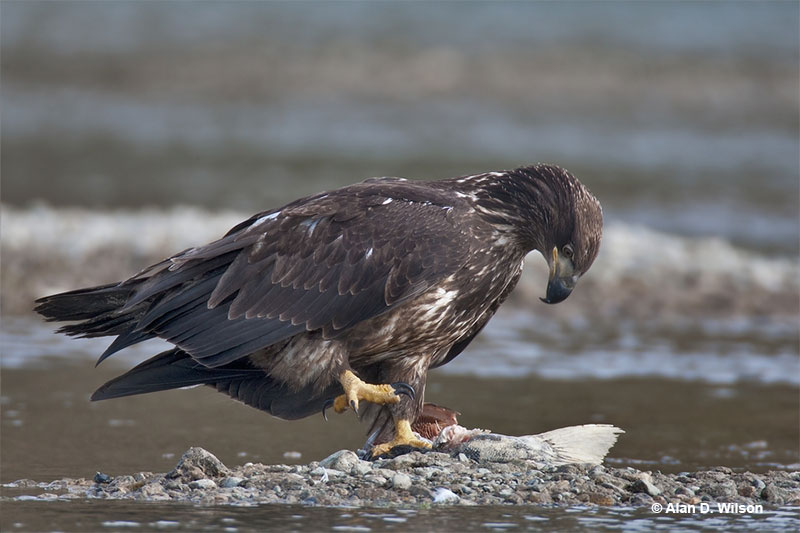
Oftentimes, it isn’t easy to imagine how different creatures perceive the world we share and how different their perception is from our own.
When we observe birds, it is easy to notice their relatively large eyes and how they look around their environment. No doubt, eyesight plays a significant role in their lives. But what about other senses? Are birds sensitive to smells, and can scent recognition influence their evolution and survival?
Let’s try to sniff out all the secrets of bird smell.
Key takeaways:
- Birds do not have a strong sense of smell. But as with many other things, there are exceptions.
- Some birds find their food with the help of smell – these birds include woodcocks and vultures.
- Contrary to the popular belief, birds can not smell if someone has touched their nest, but they might have seen it happen.
On this page
Do Birds Have a Sense of Smell?
Just like mammals, birds have bodily structures for smell detection. These include nostrils, olfactory cavities, olfactory neurons (odor receptors), and olfactory brain structures.
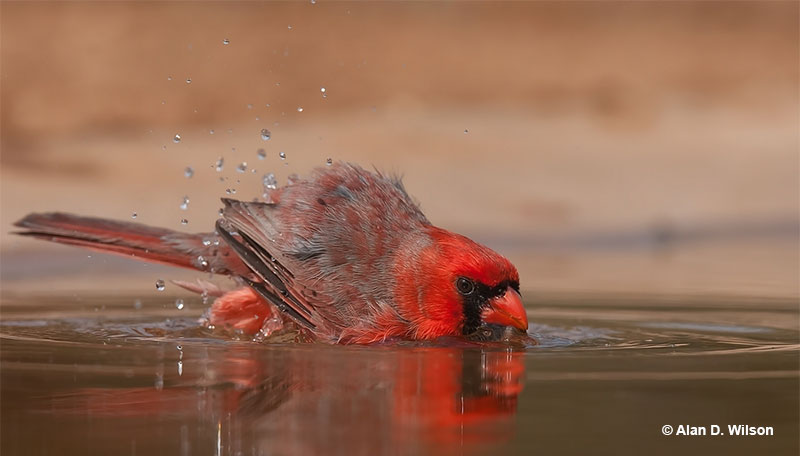
If you look really closely, every bird has nostrils above their bills.
However, for decades, it was thought that sense of smell didn’t play a significant role in the avian life – it was considered one of the “undeveloped” bird senses.
Then, through a fresh body of research, the reality started unfolding.
The truth is that all birds can smell. However, depending on the species, this sense has varying levels of development and importance in their lives. A myriad of newer behavioral studies have shown that some birds use their sense of smell to find food, navigate, or differentiate between individuals.
Physiology of Bird Sense of Smell
Mammals, including us, have long been known to have an olfactory bulb in the front part of their brain.
The olfactory bulb is a brain tissue that registers smell by converting electrical signals caused by airborne aromatic molecules. Its size indicates its sensitivity and, consequently, how developed the sense of smell is. Some bird species have larger olfactory bulbs than others, suggesting they register scents better than their counterparts.
Birds with larger olfactory apparatus include cranes, grebes, and nightjars. It is less developed in passerines, parrots, pelicans, and woodpeckers. The neural activity that leads to odor perception (or, more simply, the ability to smell) has also been physiologically proven in chickens, ducks, pigeons, sparrows, shearwaters, albatrosses, and vultures.
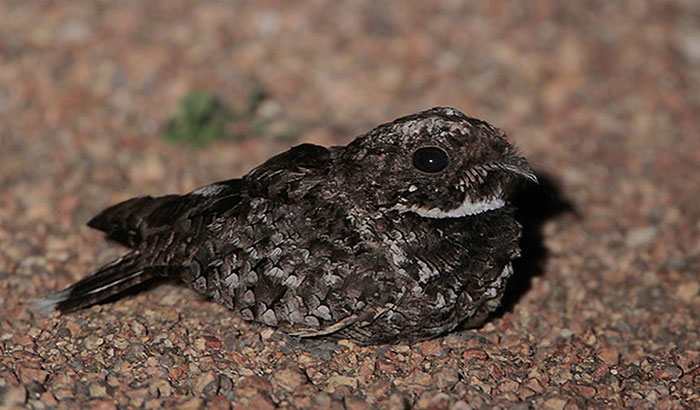
Although their olfactory apparatus is larger, nightjars rely heavily on their sight rather than their sense of smell.
The Genetic Studies
Of course, genes dictate how organs and body parts develop. Not surprisingly, olfactory receptor genes influence the sensory neurons in the olfactory epithelium. Basically, it is the molecular basis for the sense of smell.
The total number of active olfactory receptor genes reflects how many different scents an animal can detect. Considering birds, these genetic sequences were previously studied only in chickens.
A team of researchers then decided to take an additional eight bird species and compare their olfactory receptor genes. They discovered there are considerable differences between species – and that those birds already known for their smelling abilities have more of the explored genes than others. For example, the Brown Kiwi has six times more olfactory receptor genes than the blue tit or the canary.
All these scientific investigations show that some birds definitely have better odor detection than others.
Important Question – Can Birds Smell Their Food?
Some birds have a stronger sense of smell. We know that birds use their smelling abilities to find their food and nesting spots and recognize individuals. However, does it apply to all birds?
Here are some of the most compelling examples.
Brown Kiwi
The Kiwi is a medium-sized flightless bird endemic to New Zealand – and its national bird. Evolved in an environment with no natural predators, it lost its ability to fly and see well.
Instead, the cute brown avian weirdo became highly specialized for a nocturnal, burrowing, ground-foraging lifestyle. In a mammal-less New Zealand, Kiwis are sometimes considered ecological equivalents of hedgehogs.
A keen sense of smell is a pivotal aspect of the Kiwi’s success because it uses it to locate prey – earthworms and other invertebrates hiding underground. A kiwi bird can smell an earthworm under 15 cm of soil and use its elongated, thin bill to take it out.
Unfortunately, the said specialization and a loss of functional vision cost the Kiwi a great deal when humans introduced mammalian predators such as dogs – it was practically helpless. The New Zealand (or should I say, Kiwi) conservationists are working hard on kiwi protection and the eradication of feral, non-native predators.
Woodcock
By its ‘smell-o-vison’ abilities, Woodcock is a close match to the Kiwi. However, because it is vulnerable to numerous predators in its native Eurasian environment, this kind of evolution has allowed it to keep quality, all-around eyesight, and the ability to fly.
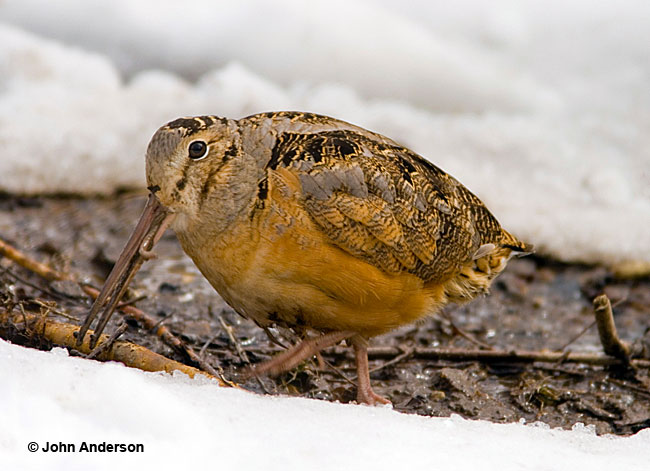
Woodcock is also known for locating earthworms and grubs underground with immaculate precision.
The ability of the Woodcock to find worms so precisely without seeing them has fascinated observers for millennia, way before the development of modern scientific methods. Nevertheless, its skills are still waiting for researchers to demystify them completely.
Honeyguides
As their name suggests, honeyguides have an amazing ability to discover bee hives and lead human honey collectors to it. In turn, they get to feast on the beeswax without getting attacked (and sometimes even killed) by the protective bees.
We know that honeyguides are great at observing and tracking bee activity. However, they have one more not-so-well-known trick up their primaries – their sense of smell.
It turns out that honeyguides can smell the natural wax from a substantial distance. The premise can and has been readily tested by people putting out the dry honeycombs (with no bees). Within hours or up to a couple of days, honeyguides will come to have a nip at it.
As if that wasn’t impressive enough, our avian honey allies can also find hidden wax candles.
Turkey Vulture
Whether Turkey Vulture really uses its sense of smell to find food is controversial. Their sense of smell is fine by all standards. However, experiments have shown that the threshold for detecting the odors of some decay products is too high to sniff them out from such heights.
However, whether the scientists used just the suitable substances is a valid question. Many older studies and experiments were based on the premise that vultures prefer carcasses that have substantially decayed when, in fact, they like ’em fresh.
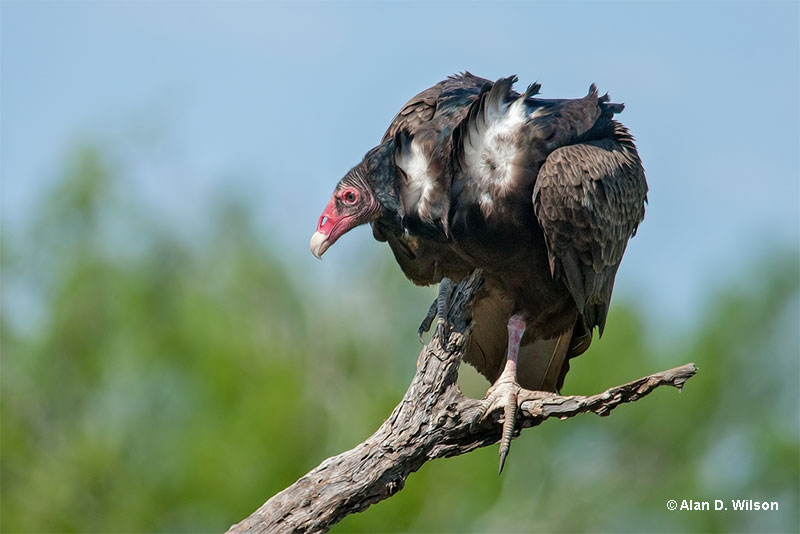
One biologist proved the stunning abilities of Turkey Vulture’s sense of smell almost accidentally. Kenneth Stager, a Turkey Vulture researcher from the 1960s, discovered that Californian gas pipeline engineers had been using the vultures to detect leaks in the system.
At the time, a stinky substance called ‘mercaptan‘ was added to the odorless natural gas for safety reasons. Turkey Vultures from an entire area would congregate around the leaks, presumably because of the stench – they had far better sensitivity to it than humans.
Stager then performed an experiment in which he took some mercaptan and blew it across the hills, and behold, the vultures gathered in flocks.
Not surprisingly, large herbivores’ carcasses also emit mercaptan when they start to decay. It turns out that Turkey Vulture might be able to sniff out its lunch after all – even if not exclusively.
‘Krill Birds’
Sooty Shearwater, Pink-footed Shearwater, Ashy storm-Petrel and Northern Fulmar all seem to react to fish oil, krill, and squid fragrances. Experiments have shown that birds are attracted to and readily explore artificial sources of those smells.
Storks
Some birds are on the lookout for smells indicative of a good yield rather than of the prey itself.
For example, storks commonly appear in freshly mown meadows to search for hurt or disoriented frogs and invertebrates such as snails. Still, how does a stork learn about mowing in the neighborhood?
You could suppose they hear the noise, but scientists have discovered that they can attract storks by spraying the scent of cut green leaves, normally released via mowing. It means the storks can undoubtedly find the prized mown meadows by their scent.
Other Bird Senses
A large majority of birds primarily depend on sight, their most developed sense.
Predatory birds such as owls and raptors symbolize superior eyesight, using it to precisely attack their prey, sometimes from great distances or heights. However, the vivid plumage coloration displayed in so many birds also suggests how important their sight is for communication and reproduction.
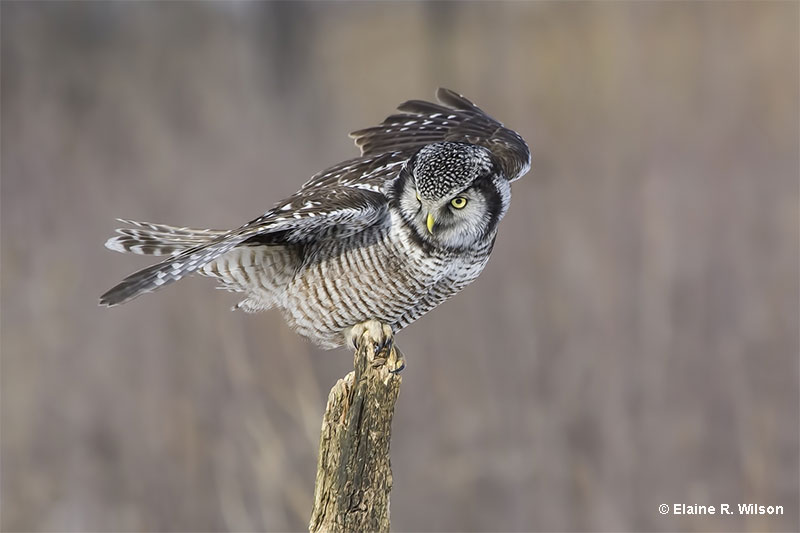
Owls are perhaps the best example with their heightened senses. We all know them for their excellent eyesight, but they have incredibly good hearing as well.
However, other senses also play a role. Hearing is an obvious one since so many birds are renowned for their vocalizations or “songs.”
For example, owls primarily use sound to locate their prey – their whole face is shaped to pick up as much sound as possible. After that, they use their extraordinary vision to zoom in on the prey animal.
Birds likely have additional senses that are hard for us to imagine. Migratory birds are thought to orientate themselves by following the Earth’s magnetic field. The ‘magnetic sense‘ is likely a part of the eyesight; researchers have found specialized cells in their eyes that can probably detect or “see” the magnetic field.
The sensors likely combine with the magnetite spots on some birds’ beaks to allow orientation on long-distance travels without significant landmarks, such as migratory sections over vast oceans.
Frequently Asked Questions
How strong is a bird’s sense of smell?
The power of a bird’s sense of smell definitely depends on the species. Besides observation (which can sometimes yield wrong conclusions), the studies of avian olfactory organs and structures can confirm that many birds have a powerful sense of smell and use it for their benefit.
What bird can smell the best?
That is a tough question to answer. Scientists can only observe behaviors related to the senses – there is no way of feeling or capturing what the bird senses.
By its precision at finding its underground in the dark, we can say that the Brown Kiwi has one of the strongest and best utilized smelling powers in the avian world.
On the other hand, Cranes have highly developed olfactory structures, but we still need to find out what exactly they use them for. One solid hypothesis is that they – and probably other birds – use them to smell feromones during courtship and mating.
Can birds smell if someone has touched their babies?
Contrary to popular belief – no, birds won’t abandon their babies because of potential human smell. For now, we cannot know if they can detect our scent on their progeny when we touch chicks (most likely, they can), but they won’t leave them behind because of the interaction. Still, that doesn’t mean we should stress the chicks (and their parents) by handling them without a good reason.
Read more: What to do if you find a baby bird
